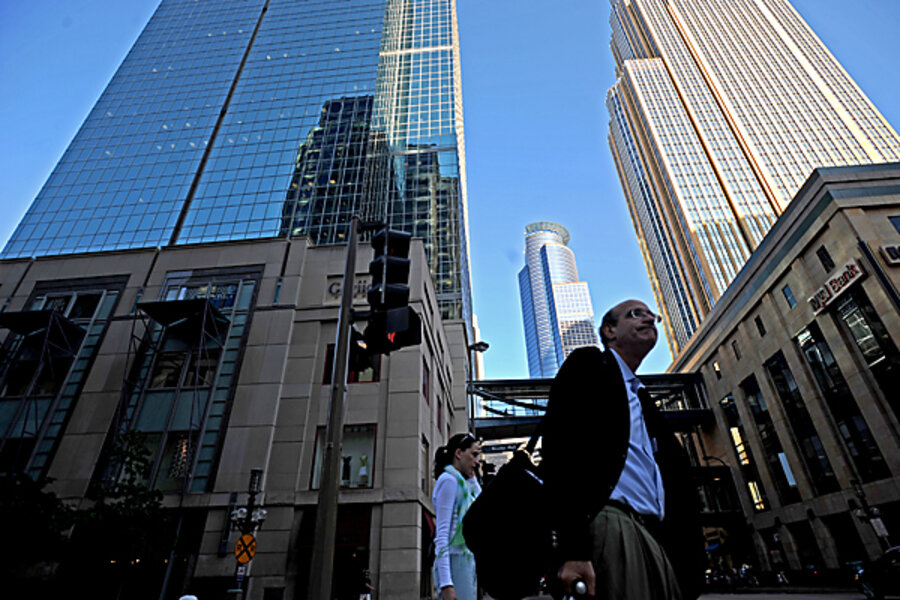Where is unemployment falling? Try these Frost Belt cities for hot jobs.
Loading...
Want to move to cities on the rebound? Eager to work in places that are adding jobs or seeing unemployment fall?
Then pack your bags for Minneapolis. Or Buffalo, N.Y.
Surprised? Don't be.Of of the 49 large metro areas in the United States, these Upper Midwest locales were the only places to see a year-over-year decline in their unemployment rate in March, the Bureau of Labor Statistics reported (.pdf) Wednesday.
Minneapolis-St.Paul-Bloomington saw its unemployment rate fall more than half a percentage point over the last year to stand at 7.8 percent. Buffalo-Niagara Falls experienced a 0.2 percentage-point drop and now stands at 8.6 percent. Both rates are lower than the 9.7 percent national average.
While their rebounds don't signal a revival of the Frost Belt, they do show how each area’s unique characteristics, like lower rates of in-migration and less reliance on heavy manufacturing, have allowed them to emerge ahead of the rest of the country.
“This area doesn’t leap up as much in good times and doesn’t fall as badly in bad times,” says Lawrence Southwick, professor emeritus of management science at the State University of New York at Buffalo. “We’ve become less subject to the national economy.”
Indeed, Buffalo, once a steel and auto city dependent on the nation to buy its exports, has moved out of heavy manufacturing into growing sectors like health care and customer service. The metro area is also strong in sectors less prone to economic cycles, like insurance, basic chemicals, and banking operations' back-office work like data-checking and tech support.
“We’re in a relatively unusual circumstance due to our job mix,” says Mr. Southwick. “We boom less, but we also bust less.”
It doesn’t hurt that Buffalo’s population has declined over the past several decades, he adds. “People who would otherwise be unemployed have moved out. That’s one way to keep the unemployment rate down.”
Unlike Buffalo, Minneapolis experienced the full brunt of the recession.
“The state entered recession earlier than the US as a whole,” says Thomas Stinson, professor of applied economics at the University of Minnesota and state economist for Minnesota. “And I think what’s happened is that Minnesota has moved out of the recession ahead of the US.”
Home to building manufacturers like Andersen Corp. and Marvin Windows and Doors, “the area took a big hit because of the housing situation,” says Stinson. “We experienced substantial declines in construction employment. And we lost a lot of jobs in headquarters for major retailers like Target and Best Buy.”
Those job cuts are over, says Stinson, and the area is stabilizing and even hiring in some sectors – the state added 11,000 jobs in manufacturing and health care between the fourth quarter of 2009 and the first quarter of 2010.
Home to the prestigious Mayo Clinic, the state also gets a boost from health care. Minneapolis’s medical equipment industry, including Medtronic Inc. and Boston Scientific Corp., fared relatively well through the recession.
Interestingly, Minnesota has always fared better than the nation when it comes to unemployment, says Stinson.
In fact, that’s true for the entire Upper Midwest.
That region experiences less in-migration than, say, California. People tend not to move there unless they have a job waiting. And they tend to move out if they lose their job.
That drives down the unemployment rate and drives it up somewhere else – like California, where unemployment is at 13 percent.





